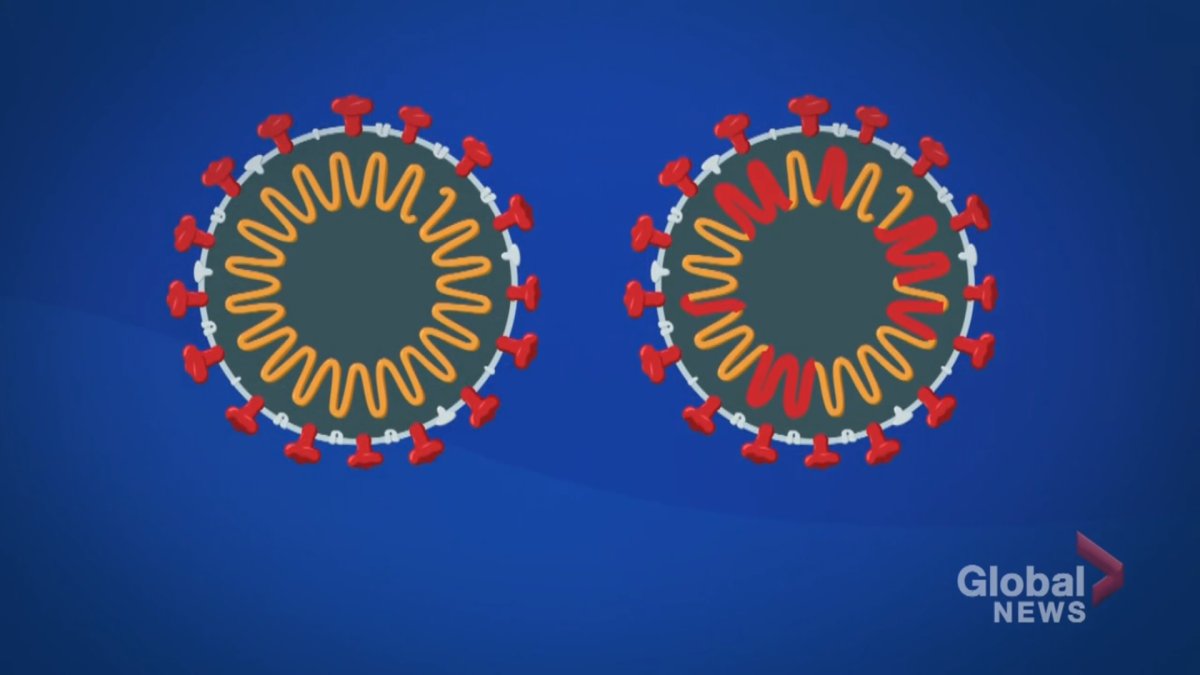Editor’s note: this article was updated to clarify the number of mutations found within a COVID-19 variant.

From a fake movie poster allegedly predicting its arrival in the 1960s to a hoax Simpsons episode foreshadowing widespread panic, there’s been no shortage of speculation that the onset of the Omicron COVID-19 variant was foreseen way before its arrival.
But while all of those examples have been downgraded to being just plain misinformation, questions do still remain about whether we could have actually seen Omicron coming.
Health officials have long been warning that the coronavirus, and other viruses, mutates as it replicates and infects new hosts – but could they possibly predict what a variant will look like, and how it will behave, way before the virus even mutates?
A team of researchers at the University of Waterloo believe they’ve come up with a technology that could come pretty close.
“It has been shown by us and other researchers that artificial intelligence and text mining algorithms can be used to model genetic codes and predict virus mutations,” said Mohammad Kohandel, lead of the Mathematical Medicine Lab at the University of Waterloo, and a pioneer on this project alongside Amir Hossein Darooneh and Michelle Przedborski.
The team believes its technology is the first of its kind in the country.
Their secret? Machine learning and genomes — the building block sequence for the virus.
As a virus is copying itself, it will accidentally make “copying errors” or mistakes in the genome sequence, resulting in a mutation. A variant could have one or many mutations within its sequence.
Delta has two mutations on a key spike protein that allows it to better infect humans, Kohandel said. Omicron has 10 mutation of that protein, and 50 overall.
The parts of the genome that are “conserved,” or stay the same, are the ones targeted by the team’s technology.
Using only the original genome sequence for the COVID-19 virus, artificial intelligence can identify the conserved parts of the genome, and then predict which ones will mutate.
So far, the team has trained the AI to be able to predict — with high accuracy — Alpha, Beta, Delta, Gamma and other variants. It also predicted 19 out of the 50 highly possible mutations for Omicron.
“It is important to highlight that these predictions are not 100, we just gave which ones are more likely to be mutated,” said Kohandel. “It’s very fast and efficient, so we can have the result during hours.”
Headquartered in Ottawa, a team of 57 national researchers are also doing integral work in studying variants.
The Coronavirus Variants Rapid Response Network (CoVaRR-Net), is closely monitoring COVID-19 variants identified across the globe, and is actively trying to pinpoint which ones could become “variants of concern” – meaning variants that have become stronger, more transmissible or more resistant to vaccine through mutations.
“The focus now is mainly on Omicron, but also we’re casting a wider net,” said Jesse Shapiro, Pillar 6 lead in computational biology and modelling and professor at McGill University.
“We’re looking at, for example, if the Delta variant and the Alpha variant infected the same person, could that create a hybrid strain?”
Shapiro says CoVaRR-Net researchers are able to recognize old mutations they’ve seen before, which helps them assess how dangerous a new variant can be, in order to alert health authorities.
“We brief the deputy health minister on at least a weekly basis, if not more. We are in pretty much constant communication with the National Microbiology Laboratory and the Public Health Agency of Canada.”
Shapiro also says researchers know virus mutations have constraints.
Think of it as swapping words out in a sentence: there’s only so much you can change before the sentence stops making sense. Similarly, a mutation has to make sense within the overall genome sequence – otherwise, it will become gibberish, and the sequence will “break,” said Shapiro.
All this information gives scientists a good idea of what to expect next from a virus — although not 100 per cent.
In any case, knowing which parts of a virus will stay the same is integral in crafting a vaccine that would not be impacted by new variants, both Kohandel and Shapiro stress.
“Canada has an army that is standing and ready to go. This is the sort of analogy that we’d like to have for pandemic preparedness,” Shapiro told Global.
Meanwhile, back at the University of Waterloo, Kohandel and his team are trying to refine their technology further by training the AI’s “neural” network to potentially predict variants in the exact order that they will mutate.






Comments